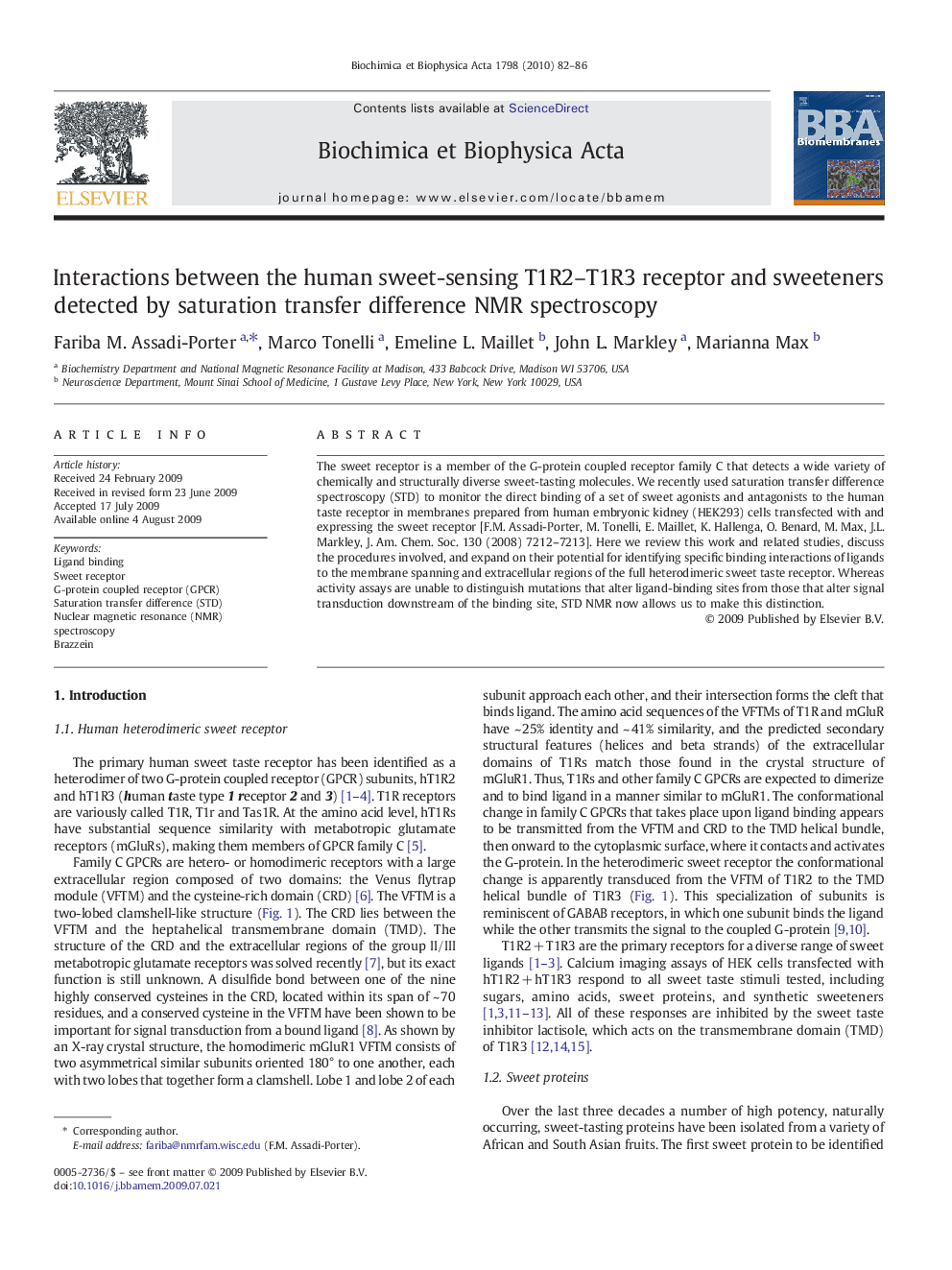| Article ID | Journal | Published Year | Pages | File Type |
|---|---|---|---|---|
| 1944786 | Biochimica et Biophysica Acta (BBA) - Biomembranes | 2010 | 5 Pages |
The sweet receptor is a member of the G-protein coupled receptor family C that detects a wide variety of chemically and structurally diverse sweet-tasting molecules. We recently used saturation transfer difference spectroscopy (STD) to monitor the direct binding of a set of sweet agonists and antagonists to the human taste receptor in membranes prepared from human embryonic kidney (HEK293) cells transfected with and expressing the sweet receptor [F.M. Assadi-Porter, M. Tonelli, E. Maillet, K. Hallenga, O. Benard, M. Max, J.L. Markley, J. Am. Chem. Soc. 130 (2008) 7212–7213]. Here we review this work and related studies, discuss the procedures involved, and expand on their potential for identifying specific binding interactions of ligands to the membrane spanning and extracellular regions of the full heterodimeric sweet taste receptor. Whereas activity assays are unable to distinguish mutations that alter ligand-binding sites from those that alter signal transduction downstream of the binding site, STD NMR now allows us to make this distinction.
